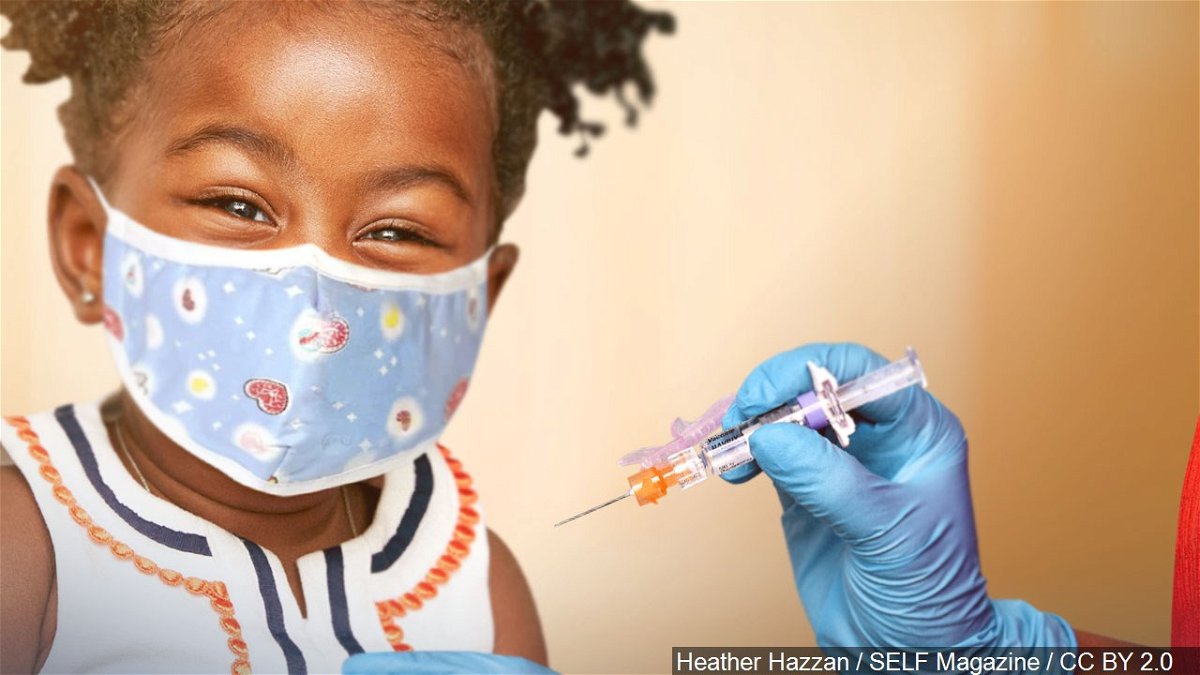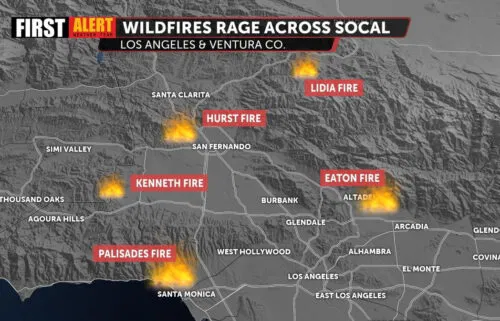A COVID-19 vaccine for younger children could be available by Halloween — here are 4 steps that must be taken first

By Jacqueline Howard, CNN
A highly anticipated announcement Monday from the companies Pfizer and BioNTech revealed that their lower-dose COVID-19 vaccine was found to be safe and generated a “robust” antibody response in children ages 5 to 11, based on data from a Phase 2/3 trial.
Many parents now are waiting for the time when their young children can sign up to receive a COVID-19 vaccine. Dr. Anthony Fauci, director of the National Institute of Allergy and Infectious Diseases, told MSNBC on Monday there’s a “reasonably good chance” the shot will be available by the end of October.
“I think there’s a really good chance it will be before Halloween,” he said.
But there are several steps that need to happen first.
1. Pfizer needs to request authorization for this age group from the FDA
Pfizer and BioNTech still need to ask the US Food and Drug Administration for the emergency use authorization of their COVID-19 vaccine to include children ages 5 to 11.
“The company needs to submit a request to amend its EUA to include the additional population,” an FDA spokesperson told CNN in an email on Monday.
Pfizer and BioNtech’s Phase 2/3 trial included 2,268 children ages 5 to 11 and involved a two-dose regimen of the vaccine administered 21 days apart. The trial used a 10-microgram dose of vaccine, smaller than the 30-microgram dose currently used in people age 12 and older.
Pfizer said on Monday its request to the FDA would be submitted soon.
Dr. Scott Gottlieb, former commissioner of the FDA and a board member at Pfizer, said on CNBC’s Squawk Box on Monday morning that Pfizer could submit to the FDA “very quickly.”
“The data came a little earlier than some were expecting, and depending on how long the FDA takes to review the application, whether it’s a four-week review or a six-week review, you could have a vaccine available to children as early as probably by the end of October, perhaps it slips a little bit into November,” Gottlieb said.
2. The FDA must amend the vaccine’s EUA to include younger people
In August, the FDA granted full approval to the Pfizer/BioNTech COVID-19 vaccine for people age 16 and older, but it remains under emergency use authorization for children ages 12 to 15.
Therefore, the EUA would need to be extended to include younger ages.
“When a completed request for EUA or approval has been received by the FDA, the agency will carefully, thoroughly and independently examine the data to evaluate benefits and risks and be prepared to complete its review as quickly as possible, likely in a matter of weeks rather than months,” Acting FDA Commissioner Dr. Janet Woodcock and Dr. Peter Marks, director of the FDA’s Center for Biologics Evaluation and Research, said in a statement earlier this month.
“However, the agency’s ability to review these submissions rapidly will depend in part on the quality and timeliness of the submissions by manufacturers,” Woodcock and Marks said. “Just like every vaccine decision we’ve made during this pandemic, our evaluation of data on the use of COVID-19 vaccines in children will not cut any corners.”
Members of FDA’s Vaccines and Related Biological Products Advisory Committee will likely meet to discuss Pfizer and BioNTech’s data and whether they recommend for the EUA to be amended to include children ages 5 to 11.
“Once we see a timeline for that actual meeting occurring, that will give us a good idea of when we might potentially see approval,” Dr. Evan Anderson, physician at Children’s Healthcare of Atlanta and a professor of pediatrics and medicine at Emory University, said during a call with reporters Monday.
“That meeting of advisers will then need to occur,” he said. “FDA would then need to either agree with or disagree with their external group of advisers about potential approval.”
3. CDC must weigh in on the vaccine for children 5 to 11
Once the FDA makes its decision on authorizing the vaccine for young children ages 5 to 11, the US Centers for Disease Control and Prevention’s Advisory Committee on Immunization Practices will meet next to discuss further clinical recommendations for the vaccine.
“That has typically occurred within a couple days of FDA approval, and I think that that would likely occur here again — and once that’s in place then vaccines can be used,” Anderson said.
In the meantime, Pfizer said in a statement emailed to CNN on Monday that it continues to focus on supplying the vaccine for those who are currently eligible to receive the shot.
“Pfizer and BioNTech continue to supply the vaccine, under their existing supply agreement with the U.S. Government, which continues through April 2022. Upon the introduction of booster doses in the U.S. under EUA, and approval and/or EUA in new age cohorts, existing supply agreements Pfizer and BioNTech have in place with governments around the world and international health organizations will not be impacted,” the statement said. “The companies will continue to deliver on their pledge to provide two billion doses to low- and middle-income countries in 2021 and 2022 — one billion each year.”
4. Once CDC and FDA sign off, a rollout for younger children could begin
The vaccine that Pfizer tested in children is the same as the one used in adults, but a smaller dose — 10 micrograms, rather than 30 micrograms.
Although many adults got their shots through nursing homes or mass vaccination sites early on, the rollout looked different by the time people ages 12 to 15 were vaccinated. For them, the focus was on pharmacies and doctors’ offices — and that’s likely to be the case with even younger children, too.
When the vaccine was authorized for children ages 12 to 15 in May, state health officials said it went “better than expected,” with appointments booked quickly. However, shots among adolescents didn’t keep up the pace, and cases among children have surged in recent weeks.
“I think there is certainly a lot of hope that we will see a bit of uptake among our children 5 to 11 years of age if and when a vaccine becomes available, but I do think that, similar to what we’re seeing in adolescents and adults, there will be some hesitancy that will be a major issue to potentially how impactful such a vaccine approval might be,” Anderson said.
This isn’t expected to be the last group to go through the authorization process, either.
Results are still coming for children even younger. Pfizer said on Monday it is expecting trial data for children as young as 6 months “as soon as the fourth quarter of this year.”
The Moderna and Johnson & Johnson vaccines are both authorized for people 18 and older, but are also being studied in younger ages.
The-CNN-Wire
™ & © 2021 Cable News Network, Inc., a WarnerMedia Company. All rights reserved.
CNN’s Naomi Thomas contributed to this report.





